7 Classics That Offer the Most Horsepower Per Dollar
We track thousands of cars for the Hagerty Price Guide. Values range from four figures to eight, and performance ranges from single-digit horsepower to over a thousand. If you’re looking for the most bang for your buck, you might be wondering what’s the most amount of factory-rated horsepower you can get for the least amount of money. We wondered that, too, so we dug into the data, looking at horsepower ratings relative to condition #2 (“Excellent”) Hagerty Price Guide values.
For reference, the list of worst deals in terms of cost per horsepower includes, predictably, a Ferrari 250 GTO. For each of that car’s 300 ponies you’ll pay over $213K. A McLaren F1’s horses cost $35K each. Improving the ratio dramatically but still not a bargain, Porsche 911 Carreras from the ’80s cost more than $400 per hp, and a Corvette C5 Z06 costs $95. Way down the ladder, the cheapest power in the collector car market comes in around $25–$35 per horse.
A few themes emerged—big coupes and sedans figure prominently, as do cars that find themselves adjacent to truly lusted-after models. And, as always with data, there’s a result that technically answers the question without addressing the spirit of the effort. With that context, here are seven cars that offer some of the cheapest horsepower out there.
1970 Buick Wildcat
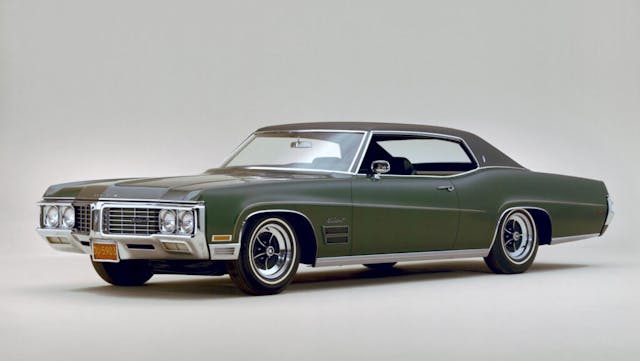
Buick’s 455-cubic-inch V-8 is a torque monster, and power is ample, even accounting for 1970’s gross (rather than net) horsepower ratings. The 370 horses the 455 cranked out in the ’70 Wildcat is quite a bit, no matter how you’re measuring.
At $10,200 for a #2 condition example, this personal luxury coupe is stylish and relatively affordable. The Wildcat may be Buick’s best answer to this question, blending the traditional image of what makes a classic car with a solid $27-per-horse ratio. With that said, you can get a 315-horse 455 in a 1971 Buick Estate Wagon, and at $7800 for one in #2 condition, that model tops our list with the most affordable ratio of all: $24.76/hp.
1996–99 Ford Taurus SHO
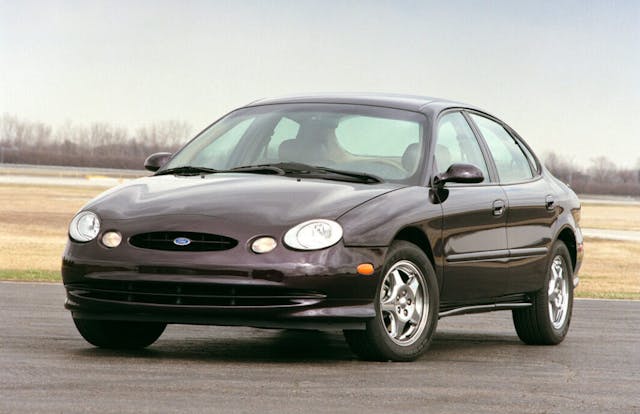
Ford’s four-figure factory hot rod with a Japanese heart, the first-generation Taurus SHO has long been one of the cheapest ways into a modern classic that’s fun but still practical. The first-gen car is cheap, but in terms of pure ponies per buck, it’s not quite the bargain that is the third generation.
When that Taurus came out in 1996, it embraced the melted jellybean style of the 1990s and early 2000s and was both bigger and softer than its predecessors. It also only came with an automatic. Even so, the Yamaha engine under the gentle curves of that hood was now a V-8 (with a block by Cosworth, no less). It wasn’t a good seller, and Ford canceled the SHO when it introduced the fourth-gen Taurus. The SHO’s V-8 is rated at 235 hp, which isn’t anything to write home about, but the car’s #2 value is just $8000. That comes out to $34 per horsepower.
1962–70 Chrysler 300 Sedan
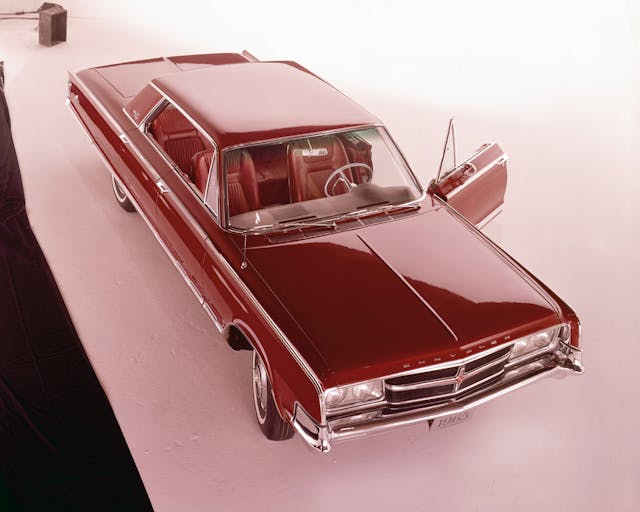
Chrysler’s 300 badge spans nearly 70 years, lots of very different cars, and several price points. The original “Letter Series” Chrysler 300s are some of the most attractive and collectible American cars of the 1950s. The modern one, which finally ended production last year, offered performance and luxury at an attainable price. And, as Katt Williams says, it “do look like a [Rolls-Royce] Phantom … until a Phantom pull up.”
Falling in the middle are the “non-letter series” cars of the 1960s. A full-size model that comes as a four-door hardtop, two-door hardtop, or convertible, it’s also a model whose values have been pretty sleepy in the market. This is particularly true of the sedans: Over the past 15 years, their values haven’t kept up with inflation. Values for some model years have appreciated just 11 percent in that period. That means they’re cheap today, with #2 values around 10 or 11 grand.
Since they came with the same 383-, 413- and 440-cubic-inch V-8s as the sexier, more valuable two-door models, sedans offer more bang for the buck. Some of the later 440/350-hp and 440/375-hp cars have pricier ponies at $35 or $36 per hp, some of the 413/360-hp and 383/315-hp cars can be had for as little as $31/hp.
1985–88 Cadillac Cimarron (V-6)
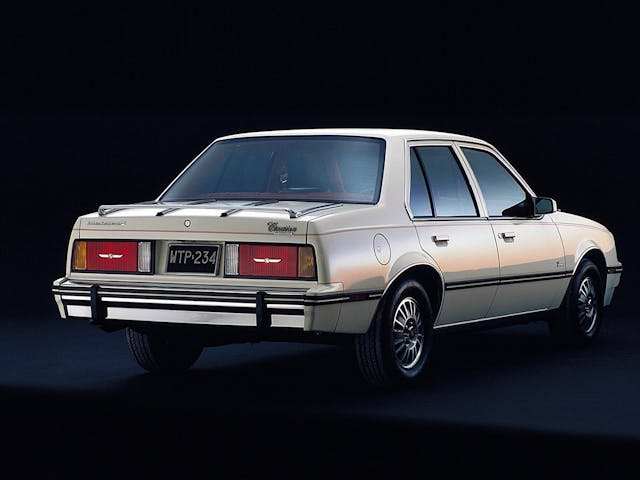
The Cimarron is the polar opposite of the Ferrari GTO in almost every way, including the way the dollar-to-horsepower ratio is skewed. Technically, the Cimarron offers more power per dollar than almost any car on the road because, it’s just so cheap. The median #2 value for this gussied-up Cavalier that the ads called “The Cadillac of Smaller Cars” is just $3600. Final-year 1988 models, though, hit a wallet-stretching $4100.
Later ones got a 125-hp V-6 and nifty (now retro) digital gauges, and from a bang-for-buck perspective the 1986–87 models are the sweet spot. They’re just $29/hp.
1996 Pontiac Firebird/Chevrolet Camaro (V-6)
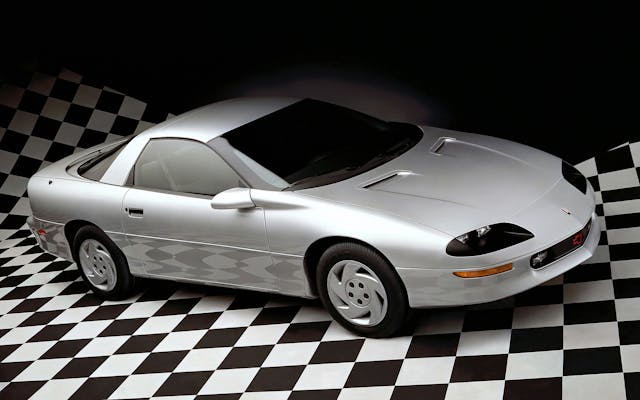
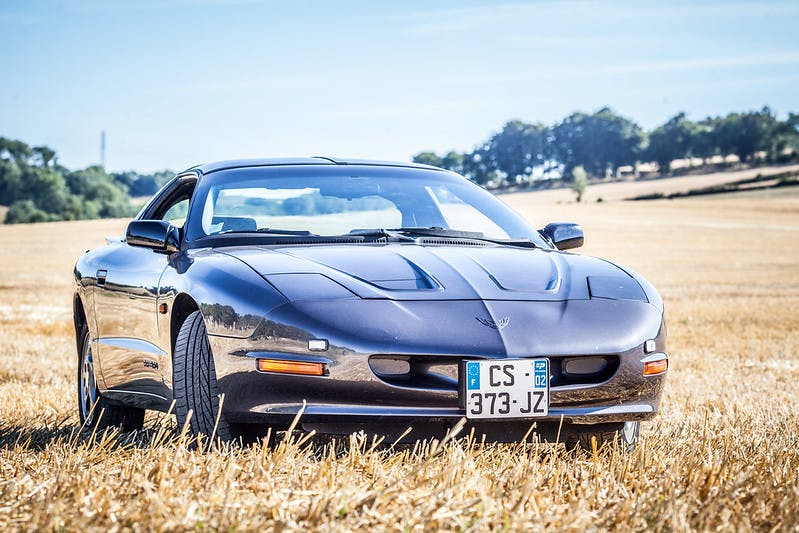
Trans Am, WS6, Firehawk, Z28, SS—those are the names fondly remembered by F-body fans and the models most sought after now that they’re modern collector cars, but the bulk of fourth generation Firebird/Camaro production were base models with a V-6, which came in both 3.4- and 3.8-liter displacements.
All V-6 Camaros and Firebirds are cheap, but in terms of bang for buck the 1996 Camaro and Firebird V-6 coupes take the cake. They’re rated at 200 hp and their condition #2 value is $5500, which comes out to $27.50 per pony.
1970 Chrysler Newport Sedan
The fifth-generation Newport came out in 1969, adopting the fuselage styling that characterized full-sized Chryslers for the next few years. It’s handsome, roomy, and comfortable. But don’t take it from me, take it from Willie Mays (in the commercial above).
While it lacked the decals and High Impact paint colors that made Mopar muscle cars so flamboyant, the Newport nevertheless came with muscle car grunt, as a 440/375-hp V-8 was available. Today, the 1970 sedan model with that engine brings serious power for not-so-serious money. Its condition #2 value is just $10,600, which comes out to a little over $28 per hp.
1992–97 Cadillac Seville STS

The ’90s weren’t Cadillac’s golden age, but the STS (“Seville Touring Sedan”) did win Motor Trend’s Car of the Year in 1992, and from 1993 the model got the 32-valve Northstar V-8 engine, which offered up to 300 hp.
An STS cost 40 grand or more in its day, but the #2 value for one now is typically under nine grand. Depending on year, it come out to about $30 per hp.
***
Check out the Hagerty Media homepage so you don’t miss a single story, or better yet, bookmark it. To get our best stories delivered right to your inbox, subscribe to our newsletters.


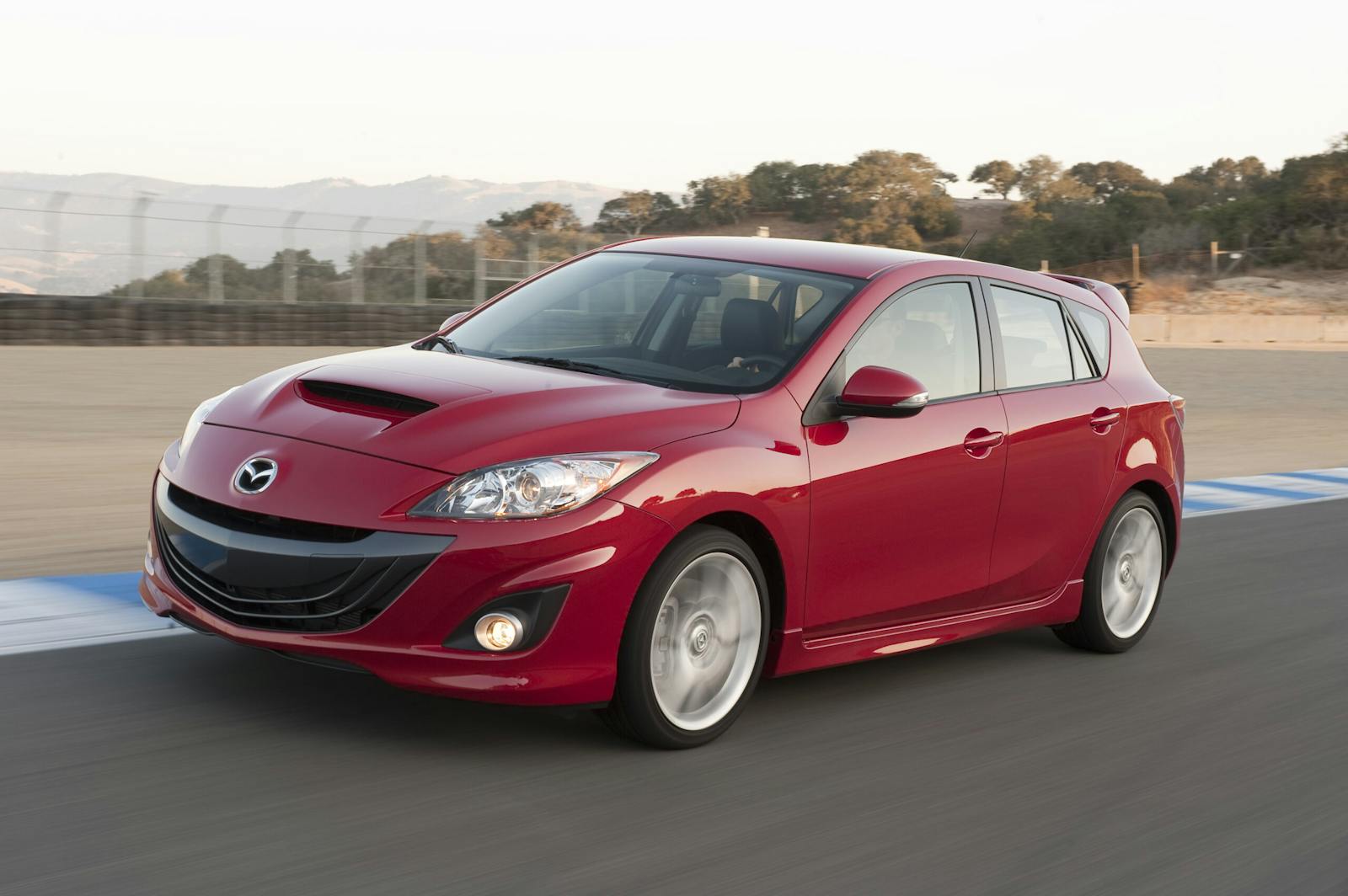
You do know that for less than 10k you can get a 68-71 Thunderbird with 360hp and 475 Ft Lbs. of Torque right?
Great article! Would love to see something similar to this but focused on station wagons. one for pre 1990 and one for more current.
I love the Buick Wildcat and the Caddy STS was a fine, and quick car too. But, I’ll sure pass on the rebadged Chev Celebrity pretending to be a Caddy and the “Jelly Bean” Taurus that I couldn’t warm up to back in the day. Neighbor had a brand new SHO and that Yamaha engine leaked coolant out the headgasket on day 1. Never forget that.
Take the HP/$ and divide by the weight in tons to get a true figure. Those big land yachts in the 60’s had big motors for a reason.
Horsepower is one thing but styling and desirability have to go along with it. Some people may think the 1970 Buick Wildcat is cool but speaking as someone that remembers them when they were new we all considered them “old man’s” hot rods just like the Chrysler Newport that was based on the Plymouth Fury but a little bit bigger and heavier.
Again with the Cimnaron. It seems like someone at Hagerty has one they’re trying to unload!
The big issue with the 90s STS is they are great when they’re working but can quickly get into repairs that cost more then the car is worth. They’re affordable for a reason. If you want power and style form that era the Fleetwood is where it’s at but unfortunately demand for them keeps the price higher.
I like the Wildcat drive train! But then, that may be because my dad stuck a ’65 wildcat drive train into a 1952 IH pickup truck when I was 14. The 401 nailhead could push that truck to 140+mph. And yes, that WAS accurate as the SW 160mph speedometer was set up to be accurate at a shop in San Jose, CA around 1970.
I forget the factory specs for my 78 Spitfire were, but at the $600 I paid a while back, I got to think the $$/HP were a pretty good deal
Yep, this opens up the whole other end of a deceptively simple formula. Starting with JUST $30/HP, all of a sudden a lot of 200 HP, $6K cars start to look ‘attractive,’ and some low horsepower set-ups rise to the top, as long as they’re cheap enough. I wonder if there’s anything more expensive than a $600 Spit, though. Free Avanti?
Maybe there needs to be some way to factor in the car’s weight.
1971 Buick Boat Tail with the 455 , tons of fun, my 75 year old mom could’nt keep her foot out of it !
hyperv6 I will take all the HHR SS, Had 1 years ago and it was a great inexpensive car.
Aside from the obvious cars like the Camaro/Firebird, do ANY of these really exist?
Try looking for any Cimmeron or one of the wagons mentioned. A 1970 Chrysler sedan? Outside of Jack Lennon’s car in the “Grumpy Old Men” films….ok, his was a ’68…they were recycled into Korean refrigerators years ago. So yes, theoretically these cars exist but try finding one nice enough that an enthusiast would want it.
Least we forget that most states (or other municipalities) have auctions where you can get a “pre-owned” squad car for cheap. Albeit, not always in the best condition; however at 2017 370 HP for a Charger Pursuit for $8K isn’t too bad. Do the camshaft and lifter swap, all fluid changes and some 409 cleaner and whalla, not such a bad deal.
I miss my 96 Camaro RS (cloaked, no RS trim pkg.); 5 speed, positraction, dual exhaust, no power seats or windows and not a panel top.
How about a used Dodge Grand caravan. 283 hp for around 6g around 20 bucks per hp. It will outrun and outhandle most on this list.
Now we need the companion list of the least expensive cars with the fastest 0-60 times. 🙂 Something like dollars per 0-60 time, with higher numbers being better. The formula might need a little tweaking to reward lower times more, but it’s a place to start.